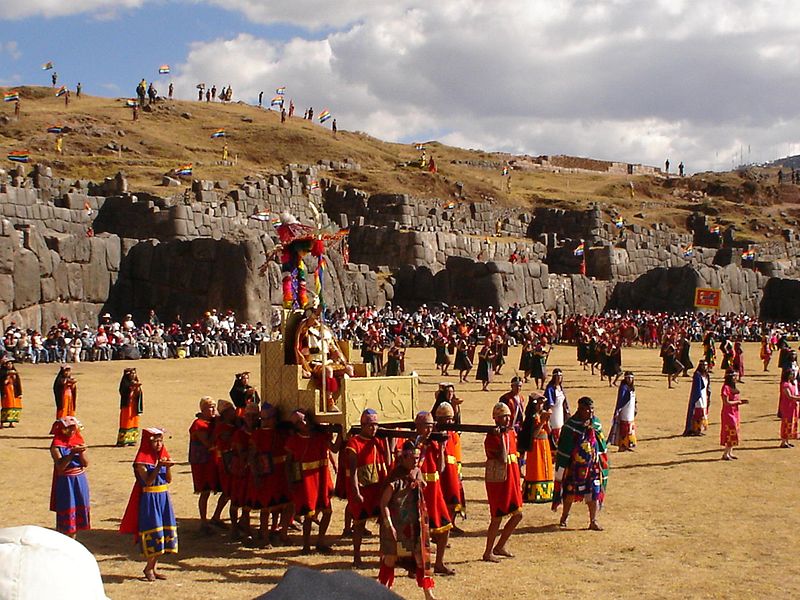While New Year is being celebrated annually by most parts of the world on January 1, the people of Peru celebrate it on June according to the Inca Calendar.
The Inti Raymi’rata is a religious ceremony of the Inca Empire or Tawantinsuyo done in honor of the god Inti. The god Inti is one of the most venerated deities in Inca Religion. That is why this festival is in celebration of the God of Sun which takes place on June 24th in the fortress of Sacsayhuaman, Cusco. Inti is the Quechua word meaning sun while Raymi is the Quechua word meaning celebration. Therefore, Inti Raymi’rata also means Sun Festival. Inti Raymi’rata is the celebration of the winter solstice which marked the first day of the New Year in the Inca calendar or beginning of the Andean New Year. Winter solstice has the shortest day of the year in regards to the time between sunrise and sunset. According to the Incas, the sun stays in the same place during winter solstice which begins on June 21 and only finally rises on the 24th.
The Inti Raymi celebration annually takes place in the Haukaypata or the main plaza in the city. It is a nine-day long celebration that culminates in a grand daylong event on the 24th of June. This festival is the most important out of all the four ceremonies being celebrated in Cusco as narrated by Inca Garcilaso de la Vega. Inca Garcilaso de la Vega is a historian well-known for documenting Inca history, culture, and tradition.
According to the accounts recorded by chronicler Garcilaso de la Vega, it was Sapa Inca Pachacuti who created the Inti Raymi to celebrate each New Year in the Andes of the Southern Hemisphere. Pachacuti, the first Inca made the Inti Raymi to celebrate the winter solstice and in order to ensure a good harvest season. Inti Raymi is being celebrated with dances, processions and animal sacrifices for Pachamama. It is done to thank Pachamama which is the goddess honored by the indigenous people of the Andes. The sun festival was first celebrated in 1412 while the last Inti Raymi that an Inca Emperor attended was carried out in 1535. After that, the Spanish and the Catholic priests banned the Inti Raymi’rata festival.
The sun festival was prohibited during the first years of the Spanish conquest. The majority of the Spanish people are Catholics that is why they prohibited the celebration of the Inti Raymi’rata because according to them it was a pagan ceremony and is not in line with the Catholic religion.
However, Faustino Espinoza Navarro made a historical reconstruction of the Inti Raymi in 1944 based on the chronicles of Garcilaso de la Vega. He re-created the Inti Raymi as a form of play happening every year on June 24. Since then, the event has grown in popularity with a theatrical representation of the Inti Raymi taking place at Askaywaman which is only two kilometers away from the original celebration in central Cusco. The event was very successful that it attracts thousands of tourists and local visitors and becomes the largest and most important celebration in South America.
Inti Raymi is being celebrated with music, sharing of food and colorful costumes most notable of which is the woven aya huma mask. The modern day re-enactment of the inti Raymi festival still retains all of its majestic glory. The only difference is that it does not include the procession of ancient mummies and there is only 1 animal sacrifice at the culmination of the celebration.

